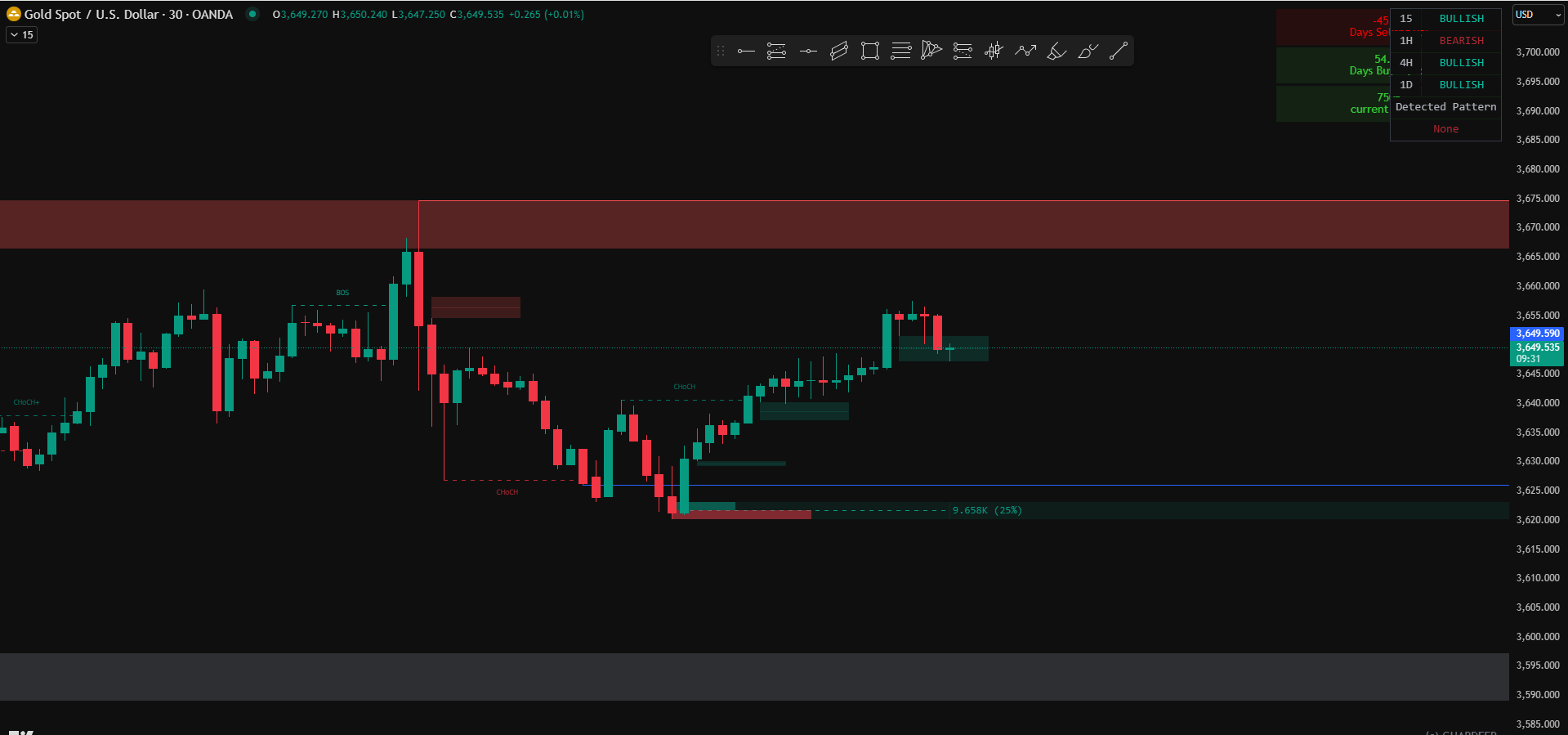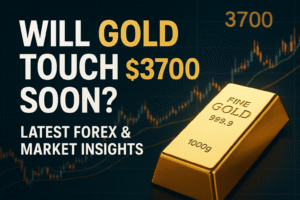Is gold on track to hit $3,700 per ounce in the near term? As central banks expand holdings, geopolitical tensions mount, and expectations of Federal Reserve rate cuts rise, the gold market is buzzing with bullish forecasts. At Viral Globals News, we provide credible, well-researched insights designed to help you understand what’s driving the precious metal’s surge and whether this landmark level is within reach.
1. Market Context & Key Drivers (≈300 words)
Safe-Haven Demand & Fed Rate Cut Expectations
Gold recently surged to an all-time high of $3,673.95, driven by growing expectations of U.S. rate cuts, a weakening dollar, and investor caution amid concerns over Fed independence.
Geopolitical Risks & Central Bank Support
Tensions like the recent Israeli strike on Hamas leadership in Qatar have intensified demand for safe-haven assets such as gold. Meanwhile, central banks, especially from China, continue to buy aggressively, reinforcing the rally.
Strong Forecasts from Major Institutions
Goldman Sachs forecasted that gold could reach $3,700 by end-2025, potentially climbing to $4,000 by mid-2026, with even more dramatic scenarios (like $4,500 or $5,000) possible if private investors shift capital into gold. J.P. Morgan sees gold averaging $3,675 Q4 2025, climbing toward $4,000 by mid-2026

2. Why $3,700 Is a Realistic Next Milestone (≈300 words)
Technical Breakouts & Strong Structural Support
Gold has broken through key resistance levels around $3,500, buoyed by ETF inflows and central bank purchases. Some technical projections suggest significant upside potential toward $3,800+ if momentum continues Macro Trends in Favor of Gold
Markets price in a nearly 90% likelihood of a rate cut by September, lowering the opportunity cost of holding gold. With the dollar weakening and Treasury yields falling, gold’s relative appeal strengthens.
Institutional and Retail Backing
University of ETF holdings and central bank gold acquisitions underpin long-term demand. Goldman Sachs attributes much of gold’s momentum to this structural accumulation.
3. Risks & What Could Change the Trajectory
Fed’s Policy Reaction & Economic Data
If the U.S. job market strengthens unexpectedly, rate cut expectations—and with them, gold’s momentum—could fade.
Political & Policy Volatility
If the Fed appears to regain independence or political pressure subsides, investors may pivot away from gold. Similarly, any global détente could reduce safe-haven demand.
Profit-Taking & Technical Resistance
Some technical analysts warn of resistance at $3,800 and point to profit-taking among speculative traders. Breakouts must be confirmed by sustained volume
4. What This Means for Investors (≈300 words)
A Target Within Sight
With gold already trading near $3,650–$3,675, largely driven by macro trends and institutional demand, $3,700 appears increasingly plausible before year-end.
Realistic Scenarios Beyond $3,700
Mid-2026 forecasts nearing $4,000 are grounded in expectations of continued rate cuts and robust global demand.
Diversification & Timing Advice
For long-term investors, gradually adding gold may hedge equity and currency exposures. For short-term traders, watching Fed moves and jobs data could reveal critical entry or exit points.
Building Trust Through Responsible Insight
By grounding commentary in expert forecasts, transparent data, and geopolitical context, you reinforce your site’s credibility and user trust—key principles of audience engagement and search engine preference.
Summary Table
| Factor | Impact on Gold Price |
| Fed rate cut expectations | Boosts demand; lowers interest rate pressure |
| Dollar weakness | Increases gold’s relative allure to global buyers |
| Geopolitical risks | Heightens safe-haven demand |
| Central bank & ETF support | Strengthens structural demand |
| Economic/political shifts | Could dampen speculative rally |
Frequently Asked Questions (FAQs)
1. Will gold reach $3,700 soon?
Yes, gold is already trading close to $3,650–$3,675, and many analysts, including Goldman Sachs and J.P. Morgan, expect it could touch $3,700 before year-end 2025.
2. What factors are driving gold prices higher?
Key drivers include expectations of U.S. rate cuts, central bank buying (especially from China), a weaker U.S. dollar, and geopolitical tensions boosting safe-haven demand.
3. Could gold go beyond $3,700 in 2026?
Analysts forecast gold could rise toward $4,000 by mid-2026, with some scenarios projecting $4,500–$5,000 if investor inflows accelerate.
4. What risks could stop gold’s rally?
A stronger U.S. job market, reduced rate-cut expectations, easing geopolitical tensions, or profit-taking by traders could slow down gold’s climb.
5. Is now a good time to invest in gold?
For long-term investors, gold remains a strong diversification tool. For short-term traders, timing entries around Fed announcements and economic data is crucial.
Conclusion
Gold has already left most levels behind in 2025—but the climb to $3,700 per ounce feels much closer than ever, driven by dovish monetary policy, structural demand, and geopolitical tensions. With analysts from Goldman Sachs, J.P. Morgan, and others supporting this view, and technicals continuing to signal upside, the outlook remains bullish.
That said, the path forward isn’t riskless—economic surprises, policy shifts, or easing of tensions could stall the rally. Investors should stay informed, watch key data releases, and consider diversifying with gold as a hedge.At Viral Globals News, our priority is delivering high-value, trustworthy market insights. Stay tuned as we track this journey toward $3,700—and possibly beyond.

